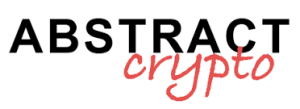The probabilities of a military intervention by the United States against Iran have decreased significantly in recent weeks, according to the official market on Polymarket.
Trend of Military Intervention Probabilities on Polymarket
According to the updated data on Polymarket, the probability that the United States will attack Iran by June 30 has dropped to 46%, a significant decrease from the peak of 66.9% recorded overnight. These figures are an important indicator of market perception and reflect the shift in political and diplomatic dynamics between Washington and Tehran.
The decrease in the chances of an armed confrontation has been influenced by a report from Axios, which reported the intention of President Donald Trump’s team to promote a diplomatic meeting with Iran.
In particular, a possible meeting is planned between the U.S. envoy Steve Witkoff and the Iranian Foreign Minister Abbas Araghchi. The main objective of the meeting is to explore negotiated solutions regarding the controversial nuclear agreement and the delicate conflict between Israel and Iran.
Military tensions at the border of diplomacy
However, the context remains anything but calm. Last Friday, Israel launched a series of coordinated attacks involving bombings and drones on numerous Iranian military and nuclear sites. These operations provoked immediate retaliations from Tehran, fueling the risk of a military escalation.
Despite this, public opinion and a portion of Polymarket users seem divided. A user argued that Trump should intervene directly, emphasizing that “his troops need experience in post-postmodern warfare,” thus calling for military action. This position sharply contrasts with the willingness expressed by his administration to pursue a diplomatic path.
Official Reactions and Declarations of Trump
As of today, the Trump administration has not released official comments regarding the possible meeting with Iran. However, in a recent post on Truth Social, Trump firmly reiterated that “Iran must never acquire nuclear weapons,” while simultaneously urging an immediate evacuation of the capital Tehran. These words testify to the ongoing political pressure and the complexity of the international landscape.
Effects of tensions on financial markets and Bitcoin
The geopolitical fluctuations have also been reflected in the global financial market and, specifically, on the value of Bitcoin. Following the Israeli attacks and Iranian retaliations, Bitcoin experienced an initial drop to $102,750, in line with a general risk aversion movement observed in traditional markets as well.
This moment of uncertainty has increased the demand for safe-haven currencies like the Japanese yen, while U.S. stocks, represented by the S&P 500 futures, have marked a decline of 0.7%. However, Bitcoin has shown a good capacity for recovery: at the time of writing, the price has stabilized at $106,700, demonstrating resilience in a challenging market context.
The majority of analysts agree that Bitcoin, while being a volatile financial asset, often reflects investors’ sentiments towards global risk. Its rapid recovery suggests that, at least for the moment, the fear of an imminent armed conflict has not completely overwhelmed confidence in the markets.
Future prospects between risk and diplomatic hope
The evolution of the probabilities of an American military attack against Iran, which have decreased to less than half by the end of June, suggests a more favorable negotiation context. Even though tensions remain high, the dialogue between the two nations seems to be at the center of Trump’s team’s strategy to prevent an escalation.
An effective diplomatic action could not only reduce the risk of clashes but also foster a climate of stability beneficial for financial markets, including Bitcoin. Investors and international observers are closely monitoring every development: the upcoming meeting between Witkoff and Araghchi will be crucial in defining the direction of relations between the United States and Iran.
Ultimately, the decrease in the likelihood of a U.S. military action against Iran reflects a possible resolution of the crisis through diplomacy. However, it remains essential to closely monitor geopolitical dynamics to promptly detect any changes. This scenario calls for constant vigilance and a balanced approach, taking into account both military tensions and peace opportunities.


